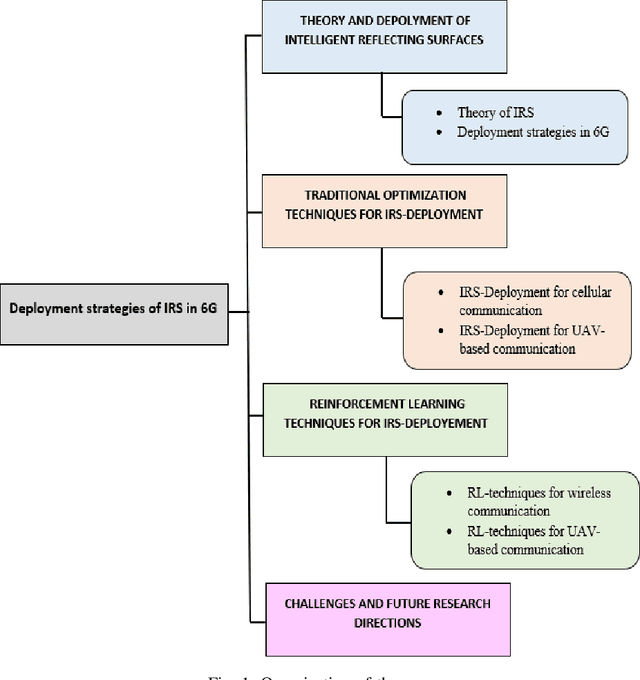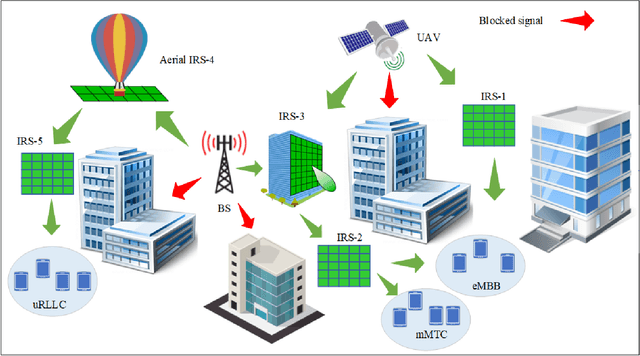Intelligent Reflective Surface Deployment in 6G: A Comprehensive Survey
Paper and Code
Apr 03, 2022



Intelligent reflecting surfaces (IRSs) are considered a promising technology that can smartly reconfigure the wireless environment to enhance the performance of future wireless networks. However, the deployment of IRSs still faces challenges due to highly dynamic and mobile unmanned aerial vehicle (UAV) enabled wireless environments to achieve higher capacity. This paper sheds light on the different deployment strategies for IRSs in future terrestrial and non-terrestrial networks. Specifically, in this paper, we introduce key theoretical concepts underlying the IRS paradigm and discuss the design aspects related to the deployment of IRSs in 6G networks. We also explore optimization-based IRS deployment techniques to improve system performance in terrestrial and aerial IRSs. Furthermore, we survey model-free reinforcement learning (RL) techniques from the deployment aspect to address the challenges of achieving higher capacity in complex and mobile IRS-assisted UAV wireless systems. Finally, we highlight challenges and future research directions from the deployment aspect of IRSs for improving system performance for the future 6G network.
 Add to Chrome
Add to Chrome Add to Firefox
Add to Firefox Add to Edge
Add to Edge